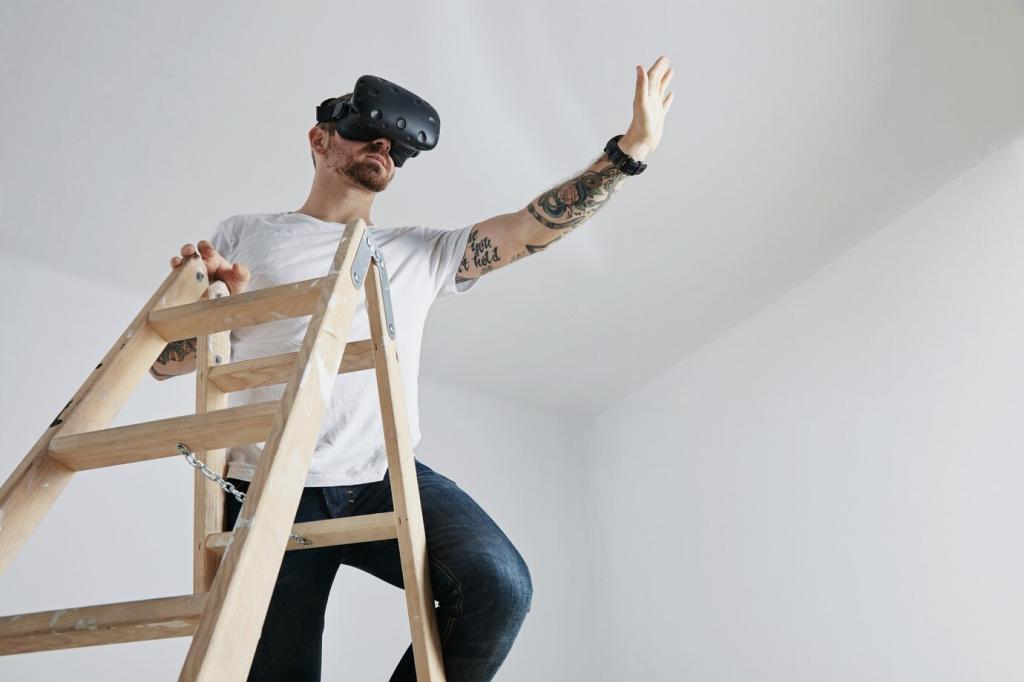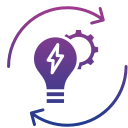
Smart Home Automation Trends
The world of smart home automation is evolving at a rapid pace, transforming the way people live, work, and interact within their homes. As technology becomes increasingly sophisticated, connected devices are progressing from simple conveniences into essential components of modern living environments. The integration of artificial intelligence, the prevalence of voice assistants, and growing concerns around data security are just a few drivers pushing smart home technology forward. This page delves into current and emerging trends in smart home automation, highlighting innovations poised to reshape daily routines and enhance comfort, security, and energy efficiency for homeowners worldwide.
Context-Aware Automation
Context-aware automation refers to smart home systems that recognize and adapt to the user’s behaviors, routines, and preferences. These systems analyze data such as time of day, user location, and environmental factors to trigger customized actions without manual intervention. For instance, lights may dim when it’s time for bed or the thermostat may adjust based on occupancy patterns. As AI-driven algorithms become more advanced, these automations will deliver seamless adaptability, requiring minimal input while enhancing everyday living by anticipating needs before they are even expressed.
Predictive Maintenance and Alerts
Smart home devices are now equipped to predict maintenance needs and issue timely alerts. Through AI and advanced sensors, systems can analyze usage patterns and detect anomalies or early signs of wear and tear. This capability helps homeowners take preventive measures—such as replacing a filter or scheduling an HVAC service—before major issues arise. Predictive maintenance not only preserves the longevity of appliances but also ensures optimal performance and safety, minimizing potential disruptions and unexpected repair costs.
Adaptive Learning Algorithms
Innovative adaptive learning algorithms enable smart home ecosystems to evolve over time, tailoring their responses to the unique habits of individuals within the household. These algorithms continuously analyze input from sensors and user interactions to refine their understanding, improving accuracy with each use. As a result, households experience increasing levels of comfort and customization, from automatically moderated lighting levels to curated entertainment suggestions, all proactively fine-tuned to suit the household’s dynamic lifestyle.
Seamless Voice Control Integration
Cutting-edge natural language processing (NLP) is enabling a new generation of voice assistants that can comprehend more nuanced commands and understand context in conversations. This leap in technology means that homeowners can issue complex requests or follow-up questions—for instance, adjusting the lighting “for reading” or “dim the lights but leave the kitchen bright”—and have their preferences understood instantly. Enhanced NLP fosters a more intuitive and conversational relationship between residents and their smart home systems, reducing friction and increasing adoption.

Advanced Video Analytics
Intelligent surveillance cameras now utilize AI-driven video analytics to distinguish between different types of movement, such as humans, pets, or vehicles, and respond appropriately. These systems can reduce the number of false alerts—such as those triggered by a stray cat—while ensuring important events, like an unknown visitor on the property, prompt immediate notification. Beyond basic motion detection, advanced video analytics also enable facial recognition and license plate reading, creating highly secure and efficient monitoring solutions for residences.

Remote Monitoring Capabilities
Homeowners can now monitor and manage their security systems from virtually anywhere in the world via smartphones and connected devices. The ability to view real-time camera feeds, lock or unlock doors remotely, and receive instant alerts about unusual activity fosters greater control and responsiveness. These remote monitoring features not only help protect property and loved ones but also allow for rapid response in emergencies, making smart home security systems more proactive and user-friendly than ever before.

Integrated Threat Detection
The latest smart home security suites are designed to detect a variety of threats beyond intrusions, including fire, carbon monoxide leaks, water damage, and gas leaks. These integrated systems unify alerts across multiple channels, so users are instantly informed of any risk regardless of its source. By combining sensors for different dangers and consolidating them into a single dashboard, homeowners benefit from a streamlined approach that simplifies safety management and maximizes their ability to take swift corrective action.
Energy Efficiency and Sustainability
Intelligent Climate Control
Smart thermostats and heating, ventilation, and air conditioning (HVAC) systems use machine learning to optimize temperature settings based on occupancy, time of day, and external weather conditions. By fine-tuning energy usage, these systems reduce unnecessary heating or cooling, improving home comfort and trimming utility costs. With remote access and programmable schedules, residents can further adjust their energy consumption, reinforcing sustainable living habits and contributing to reduced environmental footprints.
Automated Lighting Solutions
Automated lighting systems employ sensors and timers to ensure lights are only active when needed. These solutions can dim, brighten, or turn off lights automatically based on occupancy patterns, natural light levels, or even specific routines. By reducing energy waste and extending bulb lifespan, smart lighting has become an essential tool in the pursuit of greener homes. Some systems also allow users to monitor energy usage through centralized dashboards, empowering proactive adjustments and informed decision-making.
Water Conservation Technologies
Modern smart homes feature innovative solutions for water conservation, such as intelligent irrigation controllers that adjust watering schedules based on weather forecasts, soil conditions, and plant types. Leak detectors placed in strategic locations can send instant alerts to prevent wasted water and property damage. By combining real-time monitoring with automation, these technologies help homeowners efficiently manage water use, minimize environmental impact, and potentially lower monthly utility expenditures.
Interconnectivity and Interoperability
Emerging open-source protocols and industry alliances are promoting compatibility among devices from various manufacturers. Standards like Matter offer a unified language for smart devices, enabling effortless communication and cooperation within diverse ecosystems. This development means homeowners can mix and match devices to suit their preferences without being locked into a single brand, paving the way for more flexible, personalized, and accessible smart home systems.

Privacy and Data Security
Leading smart home platforms are implementing end-to-end encryption for device communications, ensuring that data transmitted between sensors, hubs, and the cloud is protected against interception and tampering. This level of security guarantees that only authorized users and apps can access household information, bolstering confidence in the use of connected technology. As privacy regulations tighten, encrypted connections become a standard for responsible smart home design.
Health, Wellness, and Assisted Living
01
Modern sensors track air quality, humidity, temperature, and noise levels throughout the home, delivering real-time feedback and actionable insights to residents. These measurements can trigger automated adjustments, such as activating air purifiers or adjusting HVAC settings, to maintain healthy indoor environments. Poor air quality alerts or recommendations for window ventilation ensure proactive management of homes, reducing long-term health risks and improving daily comfort for all inhabitants.
02
Integrated fitness equipment and wellness platforms are empowering users to lead healthier lifestyles within their own homes. Smart scales, connected treadmills, and app-based trainers provide personalized workout routines, monitor progress, and offer real-time encouragement. Automated reminders, progress reports, and even meditation guidance can be delivered throughout the home, fostering accountability and consistent health routines. The convergence of technology and wellness is making it easier than ever for individuals and families to achieve their fitness goals.
03
Automation solutions are transforming how elderly residents and people with disabilities live independently. Smart medication dispensers, fall detectors, and emergency response systems provide a safety net while respecting privacy and autonomy. Voice-assisted reminders and simplified controls reduce barriers to daily tasks, from adjusting lighting to managing appointments. These technologies not only boost confidence for users but also offer reassurance and peace of mind to family members and caregivers.
